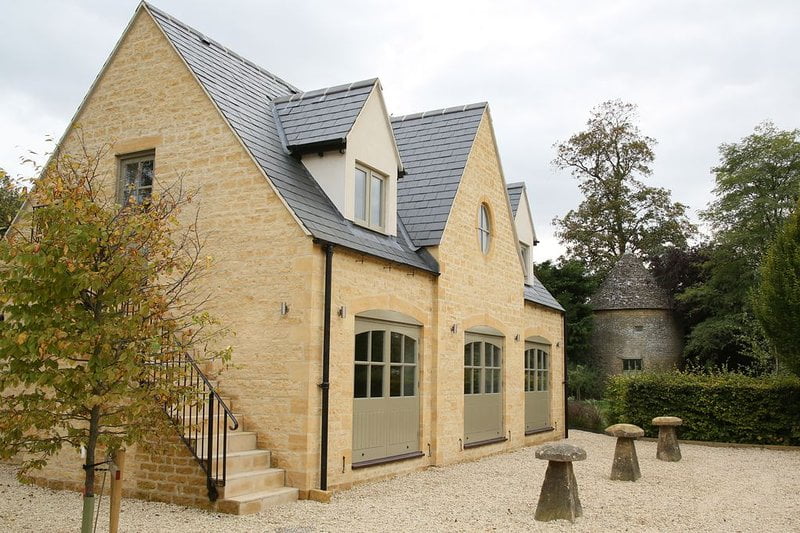A coach house, historically known as a “coach and carriage house,” is a type of building with a fascinating past and a versatile present. Originally, coach houses were used as buildings to store their horse-drawn carriages.
A traditional coach house was primarily designed to house horse-drawn carriages and the horses themselves. It was a functional and often aesthetically pleasing structure typically located on the grounds of a grand estate or a large residence. These buildings were an essential part of the transportation infrastructure in the 18th and 19th centuries when horse-drawn carriages were the primary means of transportation for the affluent. The coach house provided storage and maintenance facilities for the carriages and stables for the horses, ensuring that they were kept in good condition and readily available for travel.
The architectural design of coach houses often reflected the elegance of the carriages they housed. They were typically constructed with attention to detail, featuring large wooden doors, sometimes adorned with decorative elements, and high ceilings to accommodate the carriages. The upper floor of the coach house was frequently used for storage of hay, feed, and other supplies needed to care for the horses.
With the advent of the automobile in the 20th century, the role of the coach house began to shift. As carriages gave way to cars, these structures were adapted for use as garages to accommodate the new mode of transportation. However, many coach houses retained their architectural charm and often served as a secondary dwelling or storage space for the homeowner’s vehicles.
In recent years, coach houses have undergone yet another transformation, emerging as unique living spaces in some residential areas. Modern coach houses are often standalone properties, typically located in the rear of a larger main house or in urban settings. They have become desirable as alternative living arrangements, offering benefits such as privacy, separate entrances, and the opportunity for homeowners to generate rental income.
Contemporary coach houses are designed with functionality and aesthetics in mind. These structures are well-insulated and equipped with modern amenities, making them suitable for use as secondary dwellings, guesthouses, or rental properties. Some coach houses have multiple stories, with bedrooms, kitchens, and bathrooms, while others maintain a more traditional layout with a single open space.
The term “coach house” has also evolved to encompass a broader range of uses. In some cases, it refers to a structure that was once a carriage house but has been repurposed for various functions, such as art studios, offices, or workshops. These adaptive reuses preserve the historic character of the building while providing a modern space for different activities.
The appeal of coach houses lies in their combination of history, character, and adaptability. Their architectural charm, coupled with their versatile use, makes them an attractive feature for homeowners and property developers. They offer a unique opportunity to blend the past with the present, creating functional spaces that honor tradition while accommodating contemporary lifestyles.
In conclusion, a coach house is a versatile structure with a rich history that has evolved to meet the changing needs of society. Originally designed to house carriages and horses, they have transitioned into garage spaces, guesthouses, rental properties, or even creative studios. The enduring charm of coach houses makes them a noteworthy architectural feature that continues to capture the imagination of those who appreciate their unique blend of history and adaptability.

